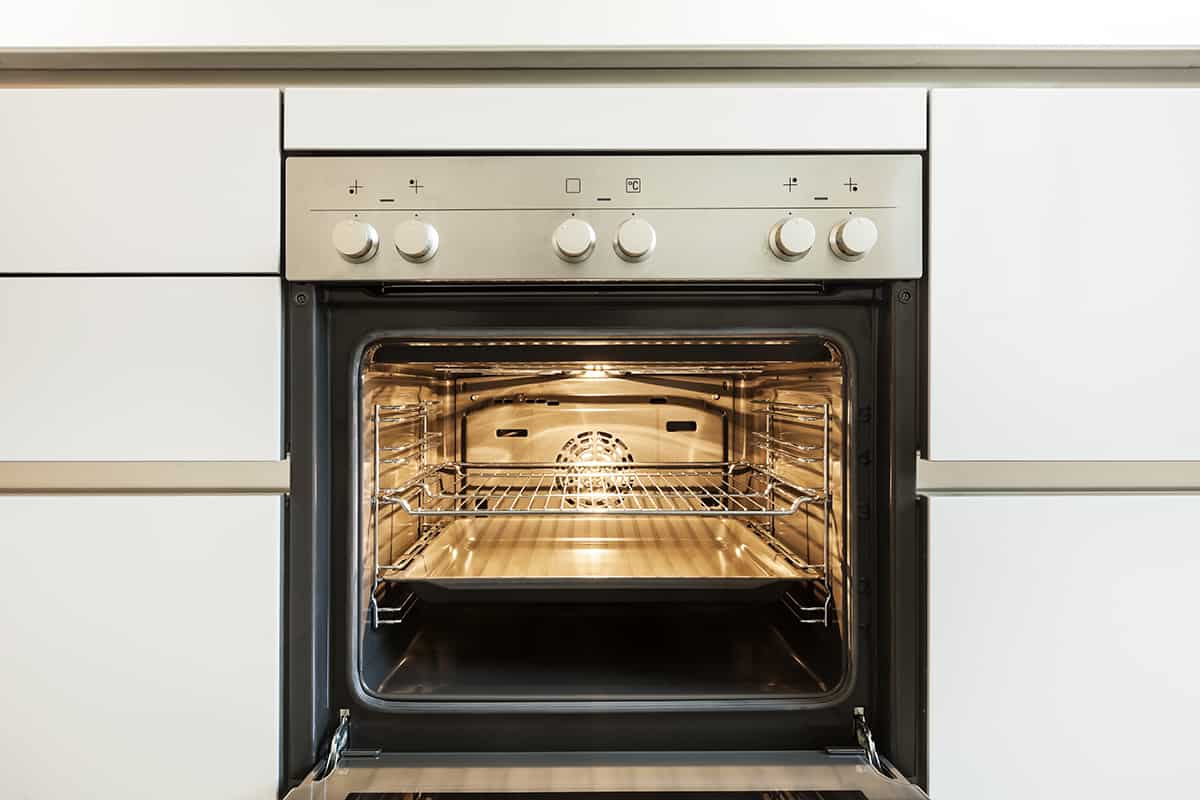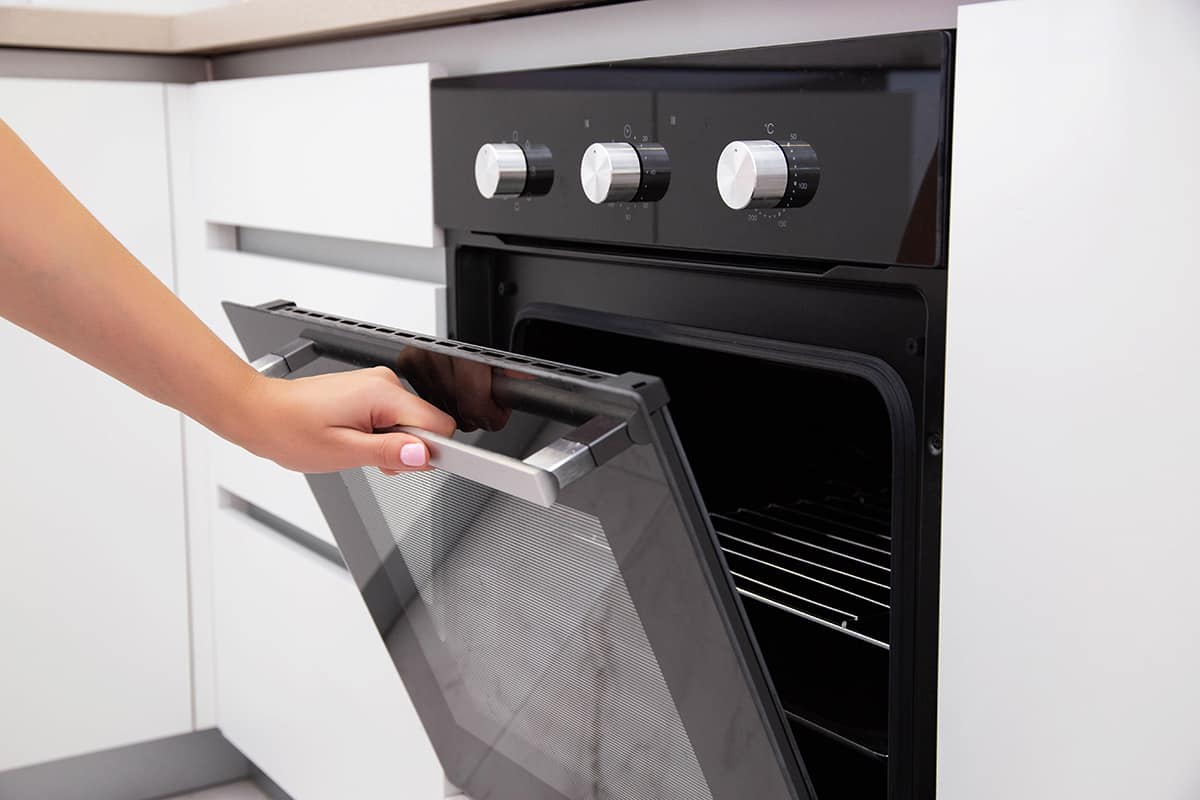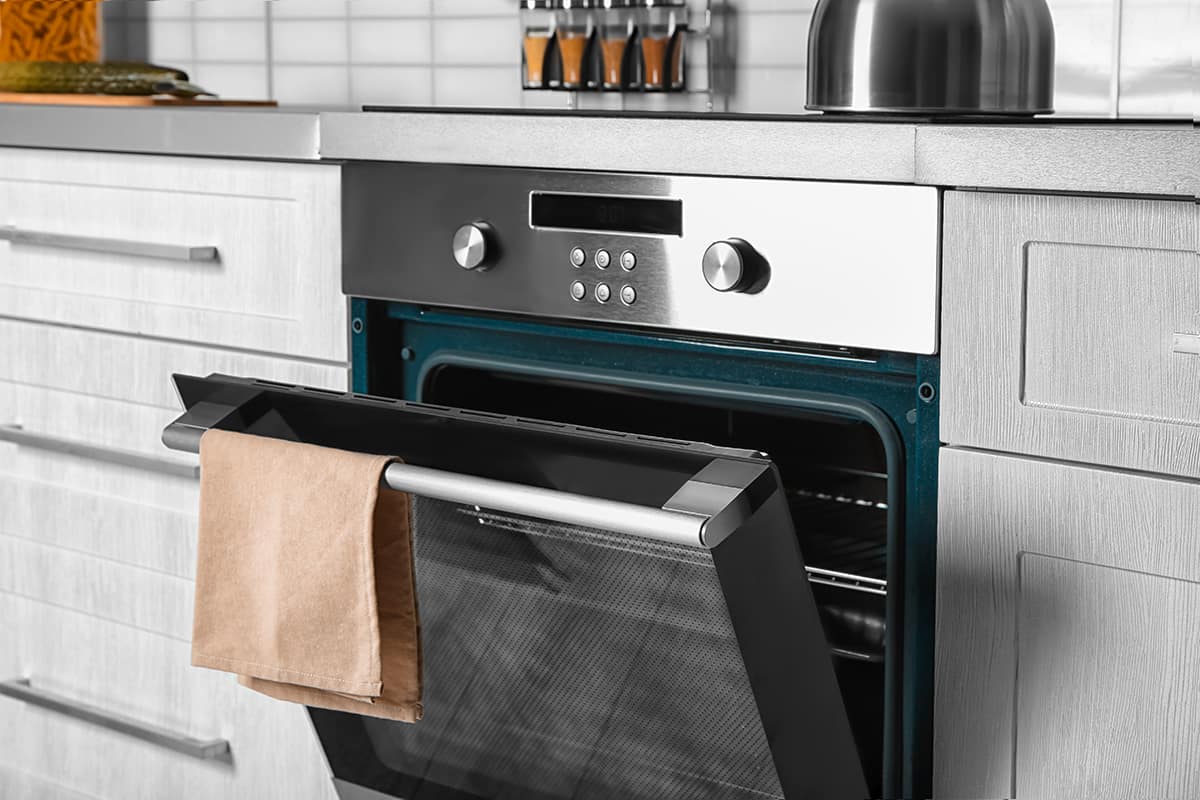One of the best things about ovens is that they are self-cleaning. While it still requires a bit of manual work to clean your oven, the self-cleaning feature handles a lot of the dirty work. So, when you get a brand-new oven, should you start a self-cleaning cycle right away?
It is not advised that you run a self-cleaning cycle on a new oven. The self-cleaning feature is used specifically to get rid of caked-on food debris, not oils and sealants. Instead, you should manually scrub away the manufacturing residue from the oven’s interior.
In this guide, I’ll explain what the self-cleaning feature in an oven does, why you should manually clean your oven before its first use, and when to run a self-cleaning cycle.
What Is a Self-Cleaning Oven?

First and foremost, there is no such thing as an oven that is truly self-cleaning. There is still a ton of manual input and work involved in using a self-cleaning oven, such as preparing the oven, inputting the right commands, and wiping it down. So, what exactly is a self-cleaning oven?
A self-cleaning oven is a type of oven that comes with a self-cleaning function. It is designed to simplify the task of cleaning an oven when its internal cavity is caked with solid food debris. When used correctly, a self-cleaning oven.
How Does a Self-Cleaning Oven Work?
There are two types of self-cleaning ovens—steam-based and heat-based.
Steam-Based Self-Cleaning Oven
To get the ball rolling with a steam-based self-cleaning oven, you need to pour distilled water onto the floor of the oven’s interior. After starting the self-clean cycle, the temperature inside the oven will gradually increase to around 250°F to turn the water into steam, which loosens debris from the oven’s walls.
Heat-Based Self-Cleaning Oven
After shutting the door and starting the self-clean cycle, the oven will automatically shut its doors, and the heating coils will increase the internal temperature of the oven to up to 1,000°F—about twice as hot as the oven can reach for baking. After about 6 hours, any solid debris in the oven will have turned to ash.
The locking mechanism will disengage after the oven has cooled down (after about 2 hours of waiting), and you can get rid of the ashy substances inside the oven by wiping them away with a moistened cloth.
This is, by far, the superior self-cleaning oven type. The super-hot temperature inside the oven disintegrates any solid food material into ash for quick cleanup, whereas steam mainly loosens debris from the floor of the oven’s interior.
Should You Self-Clean a New Oven?
No, you absolutely should not run a self-clean cycle immediately after unpacking your self-cleaning oven.
The main issue is that brand-new ovens may come with all sorts of manufacturing residue. Super-heating or steaming oils, lubricants, and sealants may create somewhat of a toxic environment inside the oven.
So, if you just purchased a self-cleaning oven, you should take the time to clean the inside by manually.
How to Clean a Brand-New Oven
Here is how you get your oven ready to bake all sorts of delicious foods and desserts.
- Open the oven door.
- Remove all of the oven’s internal accessories, such as the grates and the drip pan.
- Use a commercial cleaning solution and wipe down the interior of the oven. Alternatively, you can use a mix of baking soda and water to create a loose paste. Smear the paste all over the inside of the oven, let it cure for about 60 minutes, then go back and wipe the paste off with a moist cloth. Go back with a clean moist cloth and clean the inside of the oven.
- Take the oven’s accessories and soak them in a tub of soapy water for 30 minutes.
- Use a sponge to scrub the oven’s accessories until all the residue is removed.
- Rinse all the accessories and let them air-dry for about 2 hours.
In addition to cleaning the interior of the oven by hand, you should also do a burn-in for the oven. Burn-in is a necessary step to get rid of any leftover manufacturing residue you may have missed.
This is done by turning the oven on and setting it to its highest temperature. Let it run for about 60 minutes before shutting it off and letting the oven come back down to room temperature.
After the oven has cooled down, use a moist clean cloth and wipe the entire inside of the oven, including the racks.
When Should You Use the Self-Clean on Your Oven?

So, if you can’t use the self-clean feature after setting up your oven for the first time, when do you get to use it?
The only time you will actually get the most use out of the self-clean function is when your oven’s walls are caked in debris. Using a brush to remove the debris can be a pain in the neck, but nuking them at 1,000°F or with steam will loosen the year-old baked-on material, making it easier to remove. On average, you should run a self-clean cycle once every six months or so, depending on how soiled your oven becomes.
However, you should try not to use the self-clean function too frequently. Not only is it power-intensive, but super-heating your oven to 1,000°F can be dangerous for your home and the oven itself. It’s best to clean your oven immediately after each use to prevent old food debris from clinging to the floor and walls.
Tips for Using a Self-Cleaning Oven
Remove the larger bits of debris by hand. When heated to extreme temperatures, old food remnants will turn to dust and ash. The fewer large debris clumps there are, the less post-self-clean cleanup you’ll have to do.
Remove all racks and trays from the oven. Unless your oven racks and trays are enamel coated, they aren’t designed to withstand the extreme temperatures inside an oven during a self-clean cycle. Remove them from the oven and place them to the side.
Ventilate your kitchen while the self-clean function is on. When your oven reaches its maximum temperature, the charred food particles will create a funky odor that can linger in your kitchen for days or weeks. Open all kitchen windows and turn the range hood on (if you have one).
Make sure nobody is near the oven during a self-clean cycle. Although the oven’s door will be locked, you don’t want anyone near the oven’s door while it’s on full blast. Don’t leave your home while the oven is self-cleaning, but don’t be in the same room as the oven, either.






